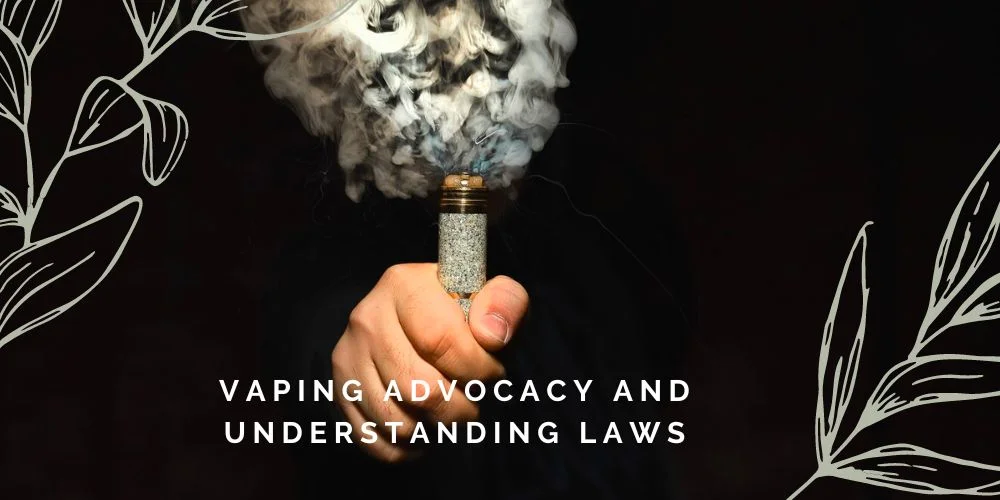Introduction Vaping Advocacy and Understanding Laws
In the intricate world of vaping, the significance of advocating for vaping rights cannot be overstated. Vapers, often finding themselves enmeshed in a web of varied regulations and societal perceptions, play a pivotal role in shaping not only the legal landscape but also the public’s perception regarding vaping. Advocacy becomes a powerful tool, enabling vapers to voice their experiences, challenge misconceptions, and actively participate in the formulation of regulations that impact them directly.
Understanding Vaping Laws Globally
Navigating through the global panorama, vaping laws exhibit a spectrum of regulations, each sculpted by the unique socio-economic, cultural, and health contexts of different countries. From stringent restrictions and outright bans in countries like Brazil and India to more lenient approaches observed in the United Kingdom, the impact of these laws permeates through various strata of society, affecting vapers and businesses alike. The laws dictate aspects such as accessibility, usage, manufacturing, and advertising of vaping products, thereby shaping the vaping culture and industry within each jurisdiction.
The Importance of Advocacy in Vaping
In the realm of vaping, advocacy emerges as a crucial element, wielding the power to influence and shape laws and public opinion. Advocacy transcends beyond mere support for vaping; it encompasses efforts to educate, inform, and dispel myths surrounding vaping. Success stories, such as the role of advocacy groups in preventing flavor bans or in influencing tax policies related to vaping products, underscore the tangible impact that well-orchestrated advocacy can have. These stories not only inspire but also provide a blueprint for effective advocacy, illustrating how collective, informed efforts can pave the way for meaningful change in vaping regulations.
Getting Started with Vaping Advocacy
Embarking on the journey of vaping advocacy necessitates a strategic approach, beginning with:
- Joining Advocacy Groups: Aligning with organizations and groups that champion vaping rights provides a platform to amplify voices and coordinate efforts.
- Staying Informed: Keeping abreast of the latest research, laws, and policies related to vaping ensures that advocacy is rooted in facts and credible information.
- Utilizing Online Platforms: Leveraging social media and online forums to connect, share stories, and disseminate information related to vaping advocacy.
- Connecting with Experienced Advocates: Engaging with seasoned advocates provides insights into effective strategies, common challenges, and potential solutions in vaping advocacy.
In essence, vaping advocacy intertwines the threads of information, collaboration, and strategic action, weaving a tapestry that has the potential to influence regulatory frameworks and societal perceptions related to vaping. Through concerted efforts, vapers can not only safeguard their rights but also contribute towards shaping a more informed and balanced discourse surrounding vaping.
Involvement in Advocacy, Challenges, and FAQs
Active Involvement in Vaping Advocacy
Stepping into the arena of vaping advocacy demands active involvement, which can be manifested through:
- Participating in Campaigns: Engaging in campaigns, signing petitions, and being part of initiatives that aim to safeguard and promote vaping rights.
- Using Personal Stories: Personal narratives of switching to vaping, health improvements, and challenges faced can be potent tools to underscore the importance and relevance of vaping to individuals and communities.
Challenges in Vaping Advocacy
Navigating through the path of advocacy is often marred with challenges, notably:
- Addressing Stigma: The prevailing stigma and misinformation around vaping, often linking it unequivocally with traditional tobacco smoking, necessitates a robust effort to educate and inform.
- Regulatory Hurdles: Advocates often find themselves entwined in a complex web of regulatory and legal hurdles, requiring a nuanced understanding of laws and policies to effectively champion for vaping rights.
Collaborating with Vaping Organizations and Groups
Collaboration amplifies the impact of advocacy efforts. This involves:
- Joining Advocacy Groups: Becoming a part of organizations that align with your advocacy goals provides a structured platform to voice concerns and initiate change.
- Collaborative Efforts: Joint initiatives, campaigns, and collaborative research can bolster the credibility and reach of advocacy efforts, ensuring a wider impact.
FAQs
Q1: What is vaping and what are the different vape products?
Vaping refers to the act of inhaling vapor produced by an electronic device, such as e-cigarettes, vape pens, or mods. These products vary in design, functionality, and user experience, catering to a diverse user base with varied preferences.
Q2: What is in vape juice or e-liquid?
E-liquid, commonly known as vape juice, typically comprises propylene glycol, vegetable glycerin, nicotine, and flavorings. The market offers a plethora of flavors and nicotine strengths, providing options for customization according to user preference.
Q3: Is vaping healthier than smoking cigarettes?
The discourse around the health implications of vaping vis-à-vis smoking is complex and ongoing. Some research indicates that vaping may expose users to fewer harmful chemicals than smoking cigarettes, but the long-term health impacts are still under investigation.
Q4: Can teens under age 18 legally vape and buy these products?
Legal age restrictions for purchasing and using vaping products vary globally. In many regions, including the United States, individuals must be 21. It is imperative to consult local laws to ascertain the specific age restrictions applicable.
Q5: How can I tell if or what kids are vaping?
Identifying vaping among kids can be challenging due to the discreet nature of vape devices. Signs may include unfamiliar devices or parts, sweet aromas, behavioral changes, or secretive behavior. Engaging in open conversations and maintaining an informed, non-judgmental approach is crucial in addressing vaping with kids

